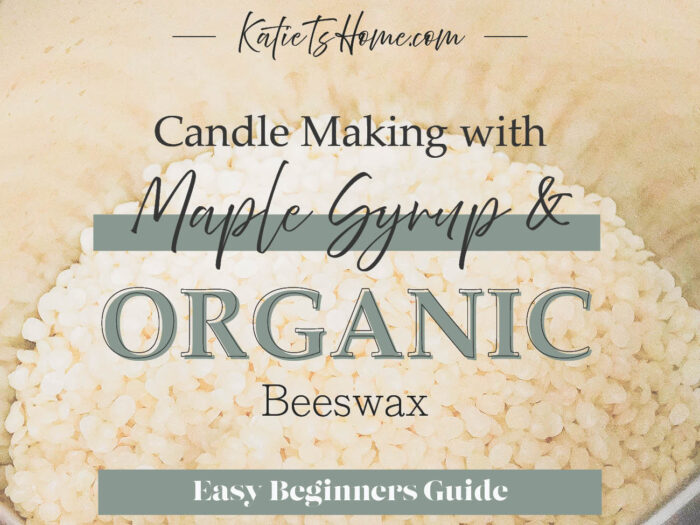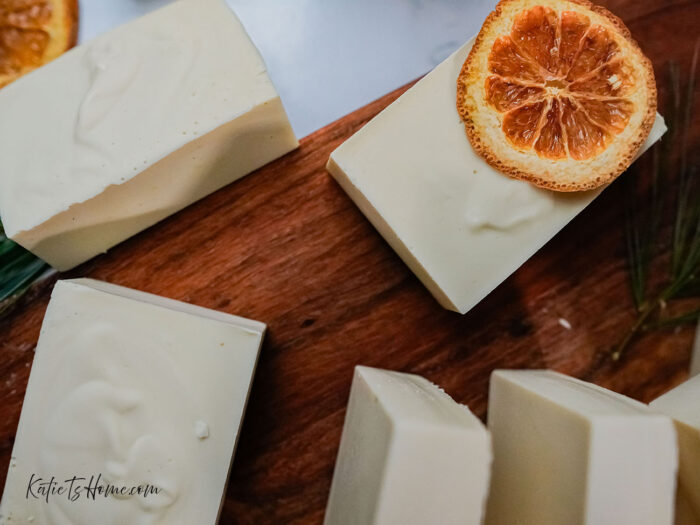Your cart is currently empty!


Soap Making doesn’t have to be stressful, especially if you are a beginner. However, with any new skill, you want to be sure you’re doing it properly. That’s why, here at Katie T’s Home, I will show you this easy homemade soap recipe for beginners! Did I mention that this was my first time making homemade soap with lye, too? Because it was! So, if you have zero experience making homemade soap, you are in the right place! Learn how to make this easy homemade soap recipe with essential tips and tricks found in this guide!
This post may contain affiliate links, which means I’ll receive a small commission if you purchase through my links, at no extra cost to you. Please read the full disclosure for more information.
If you want the same shea butter, take advantage of this 15% discount on your first purchase.
Coupon Code: KATIE15
I also ask that you please leave your thoughts in the comment section below. I’m always trying to produce helpful content for my readers, and without knowing what you think, it’s hard to know what you find helpful/not helpful. So please leave your thoughts below!! 🙂
For my 40th fun fact, I want to share that I have officially incorporated raw milk into my diet!
If a local farmer sells raw milk in your area, it is definitely worth trying!
So, to start with this easy homemade soap recipe, we first need to understand what lye is.
Lye is the composition of water mixed with sodium hydroxide.

When looking to purchase lye, you should look for sodium hydroxide, the solid form of lye.
I bought this sodium hydroxide on Amazon, but I’m sure you can purchase this chemical in plenty of other locations.
Essentially, you are creating the sodium hydroxide yourself, using wood ash. This process was used to make soap before modern society was commercialized.

While making lye organically is something I see myself doing in the future, for now, the Amazon delivery of sodium hydroxide is the way to go.
Well, to start, if you’re looking for an easy homemade soap recipe that doesn’t contain lye for the sake of not wanting to take the leap, I recommend using a melt-and-pour soap base.

This way, you will still make soap as a beginner in your early soap-making journey. However, these melt-and-pour soap bases still contain lye, but the saponification process has already taken place, turning the lye into soap.
This process is the chemical reaction when you combine lye (sodium hydroxide mixed in water) with a fat, lipid, or oil.
So, technically, you do not have to use lye (sodium hydroxide plus water) for soap making, but the basis of the soap is the chemical reaction from an alkali liquid with a fat. Lye is just one type of alkali liquid, so you’ll be up against the same factors with other alkali liquids.
Discover how to make unique maple syrup candle with only 2 ingredients!

To get started with this easy homemade soap recipe, we need to start with the basics.
First, you’ll want to wear gloves, long sleeves, and safety goggles when working directly with lye. This may seem a little over the top, but trust me, it’s better than coming into direct contact with the lye.
What ended up happening was the residual sodium hydroxide spilled on the counter when I was trying to remove it from the glass I used to measure it in. As a result, it ended up staining my butcherblock countertop almost instantly.

So learn from my mistake and cover your area properly.
I’d also recommend using a disposable plastic container to measure the amount of sodium hydroxide you’ll need. However, keep in mind that not all plastic is created equal.
A high-density polyethylene and polypropylene are the recommended plastics (HDPE, recycling code #2, PP, recycling code #5) to store sodium hydroxide, so if you can use a shampoo bottle, yogurt container, etc., to measure the chemical for soap-making, you’ll have easy cleanup because you can just through the container away if there is any residual left behind.

I would not recommend rinsing the sodium hydroxide down the drain. This is because when it is combined with water (to make lye) or neutralized with an acid, it creates substantial heat. Not something I would want to test on my drain any time soon.
So now you know about lye and its importance in the soap-making process. And I know it’s a lot of information, and it sounds daunting, but trust me, it’s not as scary as it seems.

Think of it like cooking. While, yes, it’s possible to burn yourself or start a fire, if you are following proper procedures when you’re cooking, the chances of something bad happening are slim.
This is why education is key, which I hope I have been able to do for you!
So, moving on, this easy homemade soap recipe is a cold-process soap. In contrast, a hot process soap recipe is harder to do, as it heats the soap from the outside, vs. cold press from the inside.

The benefit of the hot process is that you can achieve swirls in the soap and use color to your advantage. You can also use the soap right away vs. the 4-6 weeks a cold process soap needs to be able to cure.
You’ll need some materials for this easy homemade soap recipe. They are:

You’ll also need the ingredients! This recipe calls for:

Shea and mango butter soap with a hint of orange and pine scent!
There you have it! An easy homemade soap recipe for a beginner! I hope you’ve enjoyed this tutorial! Let me know if you have any questions. Until next time!
Love,
Katie
Leave a Reply